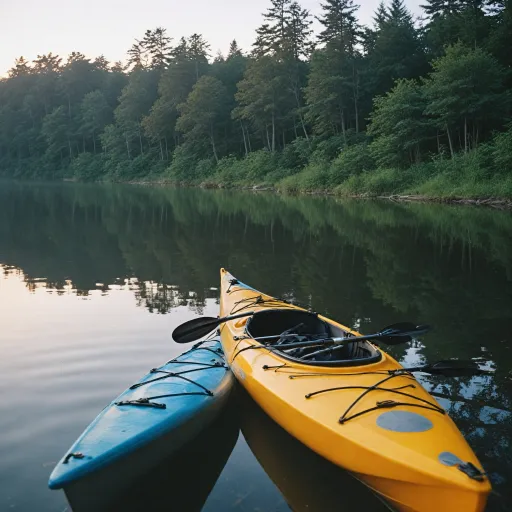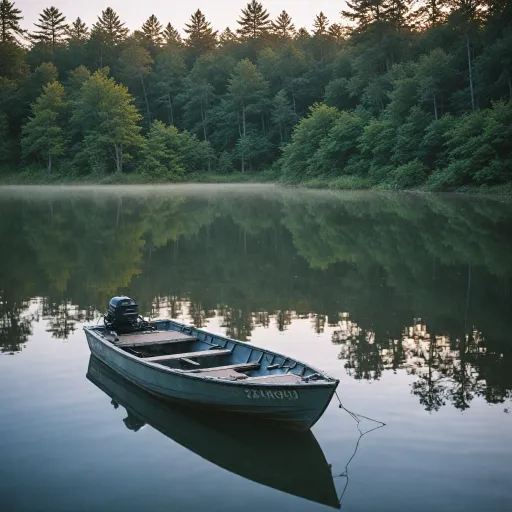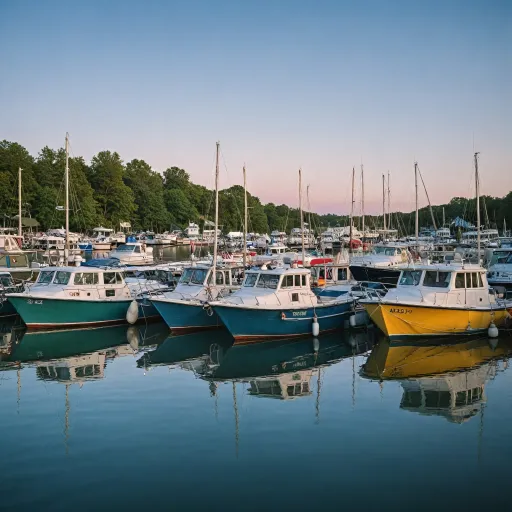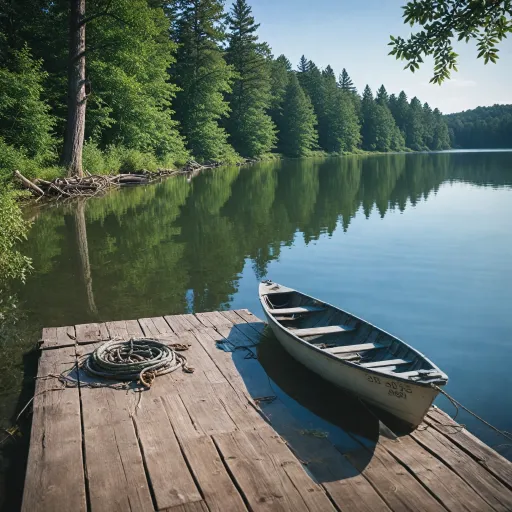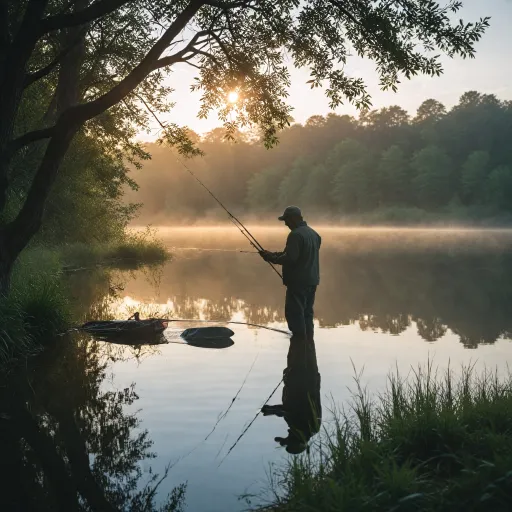
Understanding Anchor Systems
Navigation to the Ideal Anchor Setup
For those who cherish their fishing escapades, understanding anchor systems is paramount. An anchor system is a crucial component of a fisherman's toolkit, ensuring stability and safety as you cast your line. These systems allow you to position your boat or kayak at a strategic point, providing the necessary hold against current or wind. Anchor systems aren't just about heavy duty anchors alone, but involve a combination of elements like the anchor rope, rigging, and mounting hardware. A well-integrated setup ensures your anchor performs flawlessly, providing peace of mind when you're out on the water. The selection process requires careful consideration of the boat type, fishing environment, and additional rescue or safety needs. Anchors are designed to cater to various boat types, whether it's a drift boat, kayak, or a traditional fishing boat. Additionally, the type of water, such as concrete masonry, plays a vital role in determining your anchorage setup. Each component, from rope anchors to quick release mechanisms, contributes to a solid anchoring strategy. Safety is a significant concern, and every aspect, from the angle of anchor deployment to securing your fishing gear, should be examined to ensure maximum reliability. Modern anchor systems often feature high strength materials such as stainless steel, known for their resilience and longevity. Understanding how anchors interact with the environment is critical. Systems are often designed with safety loops and locks to safeguard against accidental releases. The various anchoring points can significantly influence the system side setup, affecting the product delivery and overall fishing experience. In essence, a robust anchor system entails more than just hitting the water with your boat anchors. It is a coordinated system that ensures stability, allowing you to focus on what truly matters - the thrill of fishing. For more on how to safeguard your fishing escapades, consider learning about the right protection for your fishing boat.Types of Anchor Systems
Exploring Various Anchor Options
Understanding the types of anchor systems can significantly enhance your fishing experience, providing stability and safety on the water. Here, we delve into several options, considering factors like the type of watercraft you use and the fishing conditions you expect to encounter.- Fluke Anchors: Ideal for sandy or muddy bottoms, these anchors are lightweight and often crafted from high-strength stainless steel, promoting durability. Their design allows for a quick release, making them a popular choice for many boat anglers.
- Grapnel Anchors: These are excellent for rocky or coral substrates. Grapnel anchors feature multiple prongs that can hook onto the surface structures, providing reliable anchorage. They are often used in kayak fishing due to their compact design.
- Mushroom Anchors: These heavy-duty options are perfect for long-term anchoring in soft bottoms. While not ideal for fast currents, their weight and shape create a strong hold, ensuring stability over extended periods.
- Drift Boat Anchors: Specifically designed for drifting applications, these come with systems like rope webbing and anchor control features to maintain your position while following currents. They often incorporate anchor ropes and systems that adjust to the river's flow, providing a smooth fishing experience.
- Concrete Masonry Anchors: Often utilized as a cost-effective solution, these anchors provide reliable holding power when crafted correctly. However, they are typically heavier, demanding more robust rigging and anchor ropes to ensure safety and functionality.
Choosing the Right Anchor System
Selecting the Ideal Anchor System for Your Needs
Choosing the right anchor system is crucial for ensuring the safety and stability of your boat during your fishing adventures. Several factors come into play when determining the best system for your specific requirements. Here's what you should consider:- Type of Boat and Environment: The type of boat you own, be it a kayak or a larger vessel, greatly influences your anchor selection. Kayaks typically require lighter anchors, whereas drift boats might need something more robust like a heavy-duty anchor. Similarly, consider the environment where you’ll be fishing - rocky shorelines may call for a different solution than soft, sandy bottoms.
- Anchor Weight and Material: Anchor weight is another pivotal consideration. Too light and it won't hold; too heavy and it could become cumbersome. Boat anchors made from stainless steel not only offer high strength but also resist corrosion over time. For environments with concrete masonry, a heavier, reliable solution is imperative.
- Rigging Options: The rigging system also plays a key role. Systems range from simple anchor ropes to intricate setups with quick release points and anchor locks. For added peace of mind, anchors with a loop and pull anchor system allow for easy adjustments and retrieval.
- Safety and Control: Safety cannot be underestimated, especially in fast-moving waters. An efficient anchor control system ensures that you maintain the right angle and position, even in less-than-ideal conditions. Look for products that prioritize safety without sacrificing ease of use.
- Ease of Installation and Maintenance: The anchor system should not only be straightforward to install but also easy to maintain. Ensuring the right mounting hardware and anchor rope can save you from future hassles. Regular inspections of the rope webbing and system side hardware are critical to prevent unexpected failures.
- Budget and Product Delivery: Lastly, consider your budget. While it's tempting to look for cheaper options, investing in a quality product ensures long-term safety and reliability. It's worthwhile to consider available product delivery options ensuring your anchor arrives promptly and safely.
Installation and Maintenance Tips
Installation and Maintenance Essentials
Once you've selected the appropriate anchor system for your boat or kayak, proper installation and maintenance are key to ensuring its efficiency and longevity. Here are some essential tips to help you with this process:
- Choose the Right Spot: Start by determining the optimal anchoring points on your vessel. Ensure these areas can handle the weight and force, especially if utilizing heavy duty boat anchors or a high strength anchor rope.
- Secure Mounting Hardware: Utilize top quality stainless steel hardware for installation. This prevents corrosion and ensures a solid anchor lock. If your choice involves a system side installation, make sure it's easily accessible for quick release in emergency situations.
- Perfect Your Rope Technique: When attaching the rope anchor, make a secure loop and employ rescue-grade knots that won't slip under stress. Proper anchor rigging techniques are crucial for drift boat stability.
- Consider the Angle: Ensure your anchor is positioned at the right angle relative to the current or wind. This can be influenced by the length and weight of the anchor rope, as well as the water depth.
- Regular Checks: Routinely inspect your anchoring systems for wear and tear. Attention should be given to any rope webbing, and mounting hardware that could compromise safety.
- Product-Specific Maintenance: Different products require specific upkeep. For instance, concrete masonry anchors used in fixed systems could necessitate adjustments over time due to environmental factors.
By following these guidelines, you can enhance the durability and reliability of your anchor system. Regular maintenance ensures that your fishing excursions remain safe and enjoyable, allowing you to focus on the thrill of the catch rather than technical issues.
Benefits of Using Anchor Systems
The Advantages of Incorporating an Anchor System
- Stability and Safety: Utilizing an anchor system on your boat, kayak, or drift boat significantly enhances stability, minimizing the risk of toppling over in rough waters. The right anchor locks securely, providing a fixed point that ensures your vessel stays put even in fast-flowing streams or agitated seas.
- Precision in Fishing: Having a reliable anchoring system allows you to maintain your boat at the perfect angle or position for targeting specific fishing spots without drifting away. This precision ensures better fish targeting and increases your chances of a successful catch.
- Ease of Use: Modern anchor systems, including those with quick release mechanisms and heavy-duty rigging, are designed for ease of use. This means less time fiddling with ropes and loops, and more time fishing. High strength stainless steel boat anchors or anchor ropes facilitate quick deployment and retrieval.
- Durability and Low Maintenance: Products made from stainless steel and concrete masonry are designed for durability, resisting wear and tear from natural elements. Properly installed anchor systems with minimal hardware are easy to maintain, offering many years of service.
- Adaptability: Versatile anchoring systems can be adapted for different conditions and boat sizes, from kayaks to larger fishing boats. This flexibility accommodates various anchoring points, system sides, and rope webbing configurations, making them suitable for diverse environments and water conditions.
- Enhanced Fish Habitat Protection: Proper use of anchor systems helps in minimizing disturbances to fish habitats. By reducing unnecessary boat drifting, it protects underwater ecosystems while ensuring a responsible fishing experience.
Common Mistakes to Avoid
Errors to Watch Out For in Anchoring
When engaging in recreational fishing, it's essential to have a robust understanding of anchor systems to maintain boat safety and efficiency. Unfortunately, common mistakes can compromise the effectiveness of these systems and potentially lead to safety risks.
- Ineffective Anchor Selection: Choosing the wrong anchor based on the weight and type of your boat can lead to ineffectual anchoring. Always ensure you're selecting the appropriate product that suits your specific boat or kayak. Consider factors like anchor weight, shape, and the surface type of the river or sea bed.
- Improper Angle and Points: Incorrectly setting the anchor angle or anchoring points can cause dragging. Anchor rope length should typically be around five to seven times the depth of the water. Adjust the angle appropriately to get a secure grip.
- Using Inadequate Rope: Relying on low-quality or inadequate length in your anchor rope can lead to failures or difficulties while trying to pull anchor. Ensure that the rope is durable enough, preferably a high-strength rope or rope webbing, to withstand the marine environment.
- Neglecting Maintenance: Regularly check your anchor system, including the stainless steel hardware and heavy-duty parts, for any corrosion or wear. Proper maintenance can prevent unexpected failures, ensuring longevity and reliable performance.
- Ignoring Quick Release Mechanisms: Not utilizing quick release mechanisms or anchor locks can delay your reaction in emergencies. These systems allow for fast anchor control and are an essential part of boat safety.
- Incorrect Installation: Failure to correctly install the system side components or lock loop can lead to malfunction. Ensure the mounting hardware is properly fitted and secure to maintain functionality.
By avoiding these typical errors and thoroughly understanding your anchor system, you enhance your fishing safety and efficiency. These small steps can make a significant difference in your overall fishing experience. Always prioritize safety by ensuring thorough knowledge of all anchoring systems and their components.
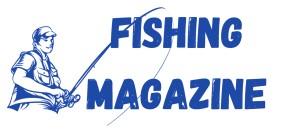

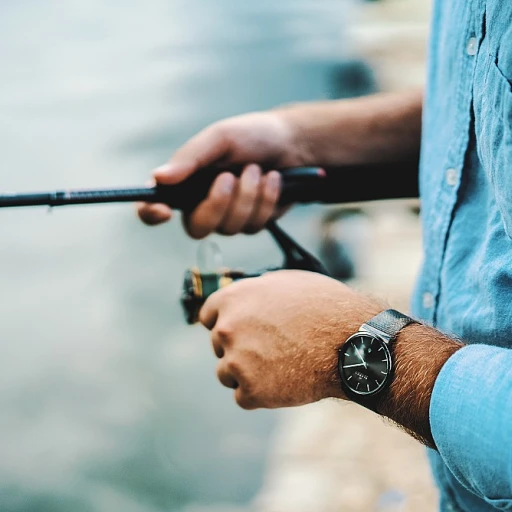
-large-teaser.webp)


